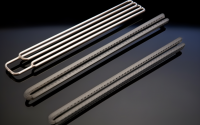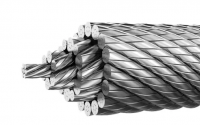Molybdenum Powder Used as Papermaking Filler
Molybdenum powder is the powdered form of molybdenum metal. It is generally made from ammonium molybdate or molybdenum oxide and is reduced with hydrogen. The characteristics of molybdenum powder are that the color, particle size, surface characteristics, dispersion, rheology, thixotropy, and crystal form can be adjusted manually. Moreover, molybdenum powder has high chemical purity, strong chemical inertness, good thermal stability, and will not decompose below 400 degrees Celsius. In addition, molybdenum powder also has the advantages of low oil absorption, low hardness, small wear value, non-toxic, odorless, tasteless, and good dispersibility. Due to the above advantages, molybdenum powder can be well used as an additive in rubber, plastics, coatings, paints, fertilizers, pesticides, pharmaceuticals, food, textiles, glass, and ceramics. This article will introduce the use of molybdenum powder as a papermaking filler for traditional paper.

Since the early 1980s, the world’s paper industry has slowly shifted from an acidic process to an alkaline process, which has also revolutionized the use of fillers. Papermaking filler refers to some solid particles that are basically insoluble in water, such as calcium sulfate and molybdenum powder, added to the pulp. Taking Mo powder filler as an example, the main reason why it is added to the paper production process is:
1) Molybdenum powder has high purity (>99.95%), small particle size, and excellent dispersion performance. These properties can make the prepared paper have a better texture, lower impurity content, better coating uniformity, higher brightness, and smoothness;
2) The powder has the characteristics of good corrosion resistance, heat resistance, wear resistance, good thermochemical stability, and electrical and thermal conductivity. Adding molybdenum powder can effectively improve the deficiencies of traditional paper, including oxidation resistance, friction, softness, hygroscopicity, dehydration, drying, and printing adaptability (such as improving absorption, ink absorption), etc.
However, after adding molybdenum powder to the paper, there may be some problems, such as a decrease in the sizing degree and strength of the paper, and it is prone to powder and hair loss. These shortcomings can be compensated by reinforcing agents and surface sizing.
For more information, please visit https://www.samaterials.com/.



